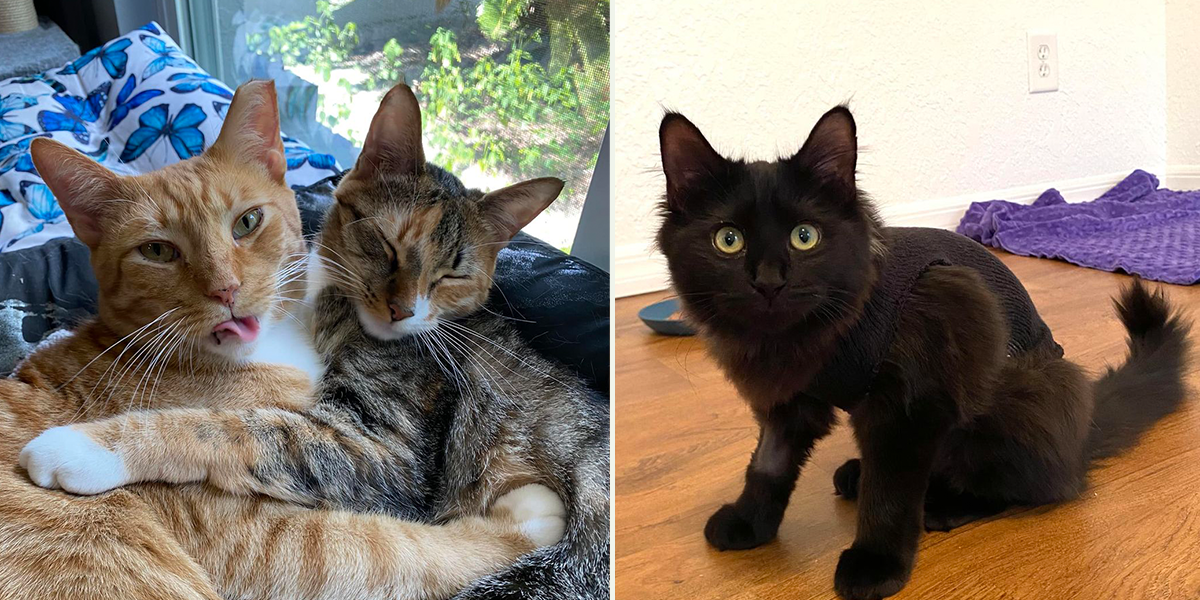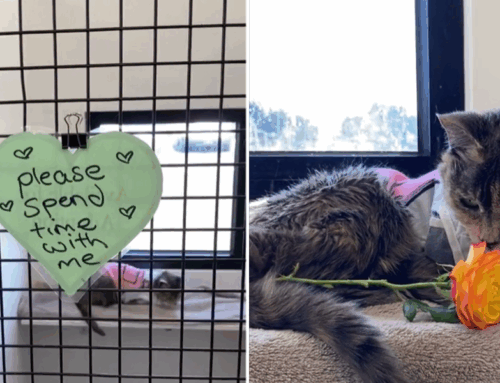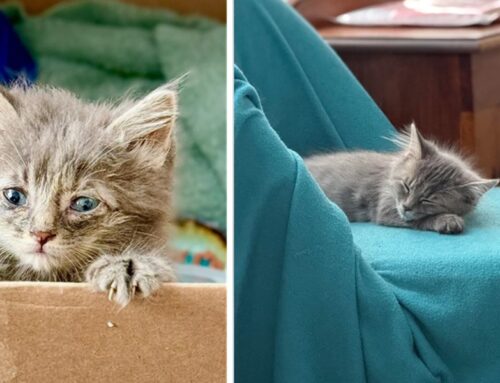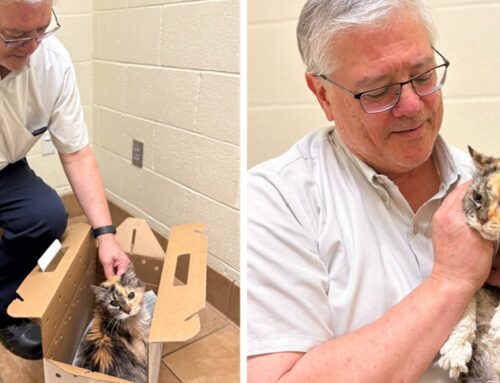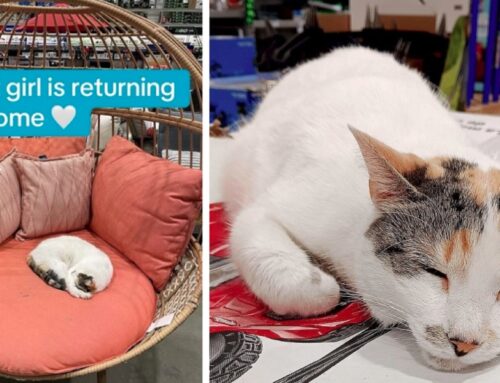For those who rescue or follow cat rescuers’ stories, you’ll know that spaying and neutering is a lifesaving step for the kitties. As soon as kittens become old enough, generally six to eight weeks, they reach the spay/neuter milestone. As such, it’s also celebrated because it means those kittens are ready to find a furever home!
And for mama cats, spaying means they will never have to struggle with another litter. Very often, cats living outdoors give birth when they are still kittens as young as four months old. This can sadly mean premature births and neglected kittens. Regularly, we see stories of mama cats that only want to experience life as carefree kittens.
Nevertheless, persistent myths about spaying and neutering make our hair stand up. Let’s shed those myths so more cats can be healthier and happier, like the Cole and Marmalade family!

Image via Facebook/Cole and Marmalade
Myth #1: Spaying and Neutering Changes Pet’s Personalities
Some people object to sterilizing their pets because they insist it will change the pet’s personality or make them less active. However, the changes are usually to their behavior, not purrsonality, and they are overwhelmingly positive.
Neutering male cats reduces aggression caused by fighting for mates. Spaying female cats means they won’t go into heat and are less likely to urinate outside the litter box. Likewise, musky males are less likely to spray to mark their territory with a foul stench. Please note though, that this behavior may fade gradually, not immediately stop the instant they return from their appointment.
Life is much more peaceful, without the screaming matches, spraying, and chaos that often ends with euthanasia. Sadly, a main reason cats end up at shelters is due to such behavioral issues.
And, rather than slowing down pets, spaying and neutering keep them more content, healthy, and much less stressed. So, it might even make them more affectionate and interested in playing with you.
As with any pet, consult your veterinarian if you notice weight gain due to a slower metabolism following surgery. They will carefully adjust the cat’s diet plan based on their unique health needs.

Spay recovery sock onesie for Mazikeen to protect her incision via Facebook/Cole and Marmalade
Myth #2: Barn or Warehouse Cats Shouldn’t Be Spayed or Neutered
Here’s a homegrown common myth that will rub any cat lover the wrong way: “Barn cats don’t need to be spayed or neutered.”
Cats that live in barns or warehouses are often left to breed exponentially, essentially exploited as free rodent control. The people responsible for them sometimes insist the cats should breed freely, which raises our hackles.
Naively, people think they can find homes for the resulting kittens, but then, they quickly realize it’s much easier said than done. And those kittens can quickly become overwhelming, and create their own kittens by four months old!
As the cat population explodes, the cats’ overall health rapidly declines, and rescuers are called in to save large numbers of ailing cats and malnourished, diseased kittens. To do it, rescuers need donations to cover the high costs of veterinary care.
So, while well-cared-for Bodega cats are fabulous and charming, cats struggling to survive without spaying or neutering are unfortunately much more common. Ideally, working cats are permanently adopted by a colony caretaker, spayed, neutered, with access to shelter, food, and water. For example, that’s what’s happening in cities like Chicago.

Image of rescued warehouse cat via Instagram/Greenpoint Cats
Myth #3: Purebred Pets Shouldn’t be Spayed or Neutered
Purebred dogs are much more common than purebred cats, but some still insist on a fancy cat breed. While we can fully appreciate their feline charms, you can find just about any “breed” of animal seeking homes at a rescue or shelter.
As with dogs, purebred cats sometimes have lifelong health issues due to unscrupulous breeding for traits like curled ears or smushed faces. Consequently, ongoing healthcare costs can be astronomical.
Meanwhile, about 3.4 million cats arrive in shelters yearly, and 1.4 million cats will be euthanized, regardless of their breed.
In short: Adopt, don’t shop! There is no good reason not to, and you can find the most exquisitely beautiful and purrfect cats at rescues and shelters. Or, they’ll even appear at your house, like Bond! His ear was tipped to show he was neutered, but this boy turned in his stray card, remaining with the CaM fam after his surgery. He’s quite a charmer clearly.
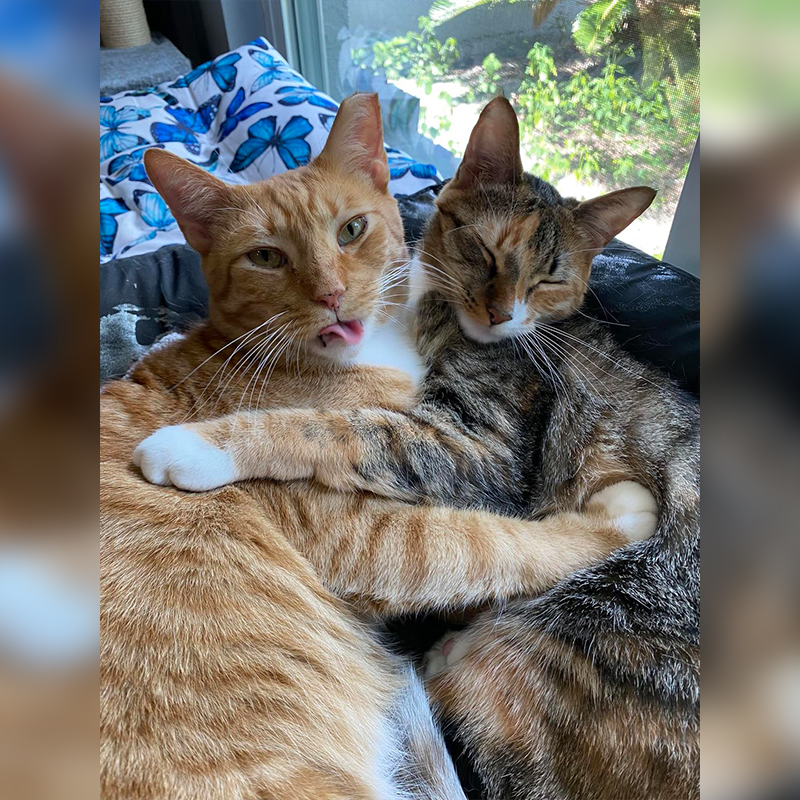
Bond and Calypso via via Facebook/Cole and Marmalade
Video by Cole and Marmalade:
Myth #4: Indoor Cats Don’t Need to Be Sterilized
While it’s unlikely that an indoor cat will get out, we see stories all the time of cats that do just that. Sometimes, they somehow end up across the country as if by magic. Such stories are proof that a cat’s curiosity and sex drive will lead them on all kinds of unexpected and dangerous adventures. And indoor female cats can still go into heat year-round.
Therefore, it’s essential to spay and neuter indoor cats too. But more than that, it also improves a cat’s overall health and even lifespan! According to the Humane Society, one study of 70,000 animals showed spayed cats lived 39% longer while neutered male cats lived 62% longer!
Spaying and neutering reduces the urge to roam and the risk of cancers, uterine infections (pyometra), feline asthma, gingivitis, and problems using the litter box. It’s also becoming more and more affordable through low-cost spay and neuter clinics.
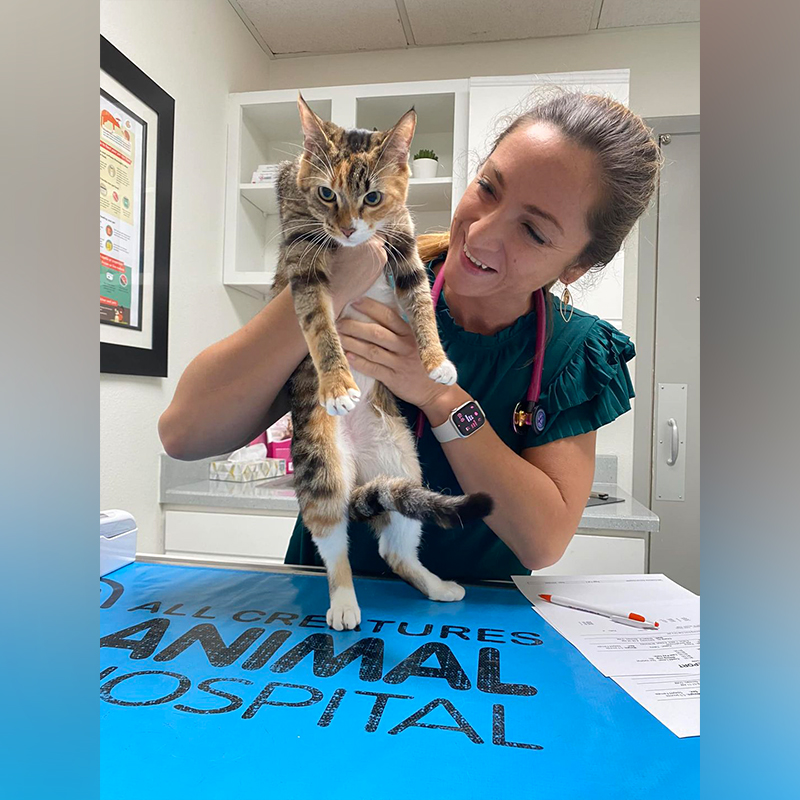
Calypso at the vet via Facebook/Cat Man Chris
Myth 5: Neutering Tomcats Harms Their Sense of Masculinity
This one is a little funny, but sometimes people think neutering a tomcat will harm his sexual identity. Unlike some people, cats certainly never think about assigned gender roles –lol! As previously noted, a tomcat’s health, lifespan, and quality of life can vastly improve following neutering.
Safe in a loving indoor home, tomcats may gradually lose those big, puffy cheek jowls. Those jowls are a way to literally protect their necks during violent territorial fights. After neutering, testosterone levels drop, and so may the size of the jowls (but not always).
Judging by countless stories of rescued tomcats everywhere, they’ll be thrilled to live as pampered house cats instead of scrapping on the streets for one more day!
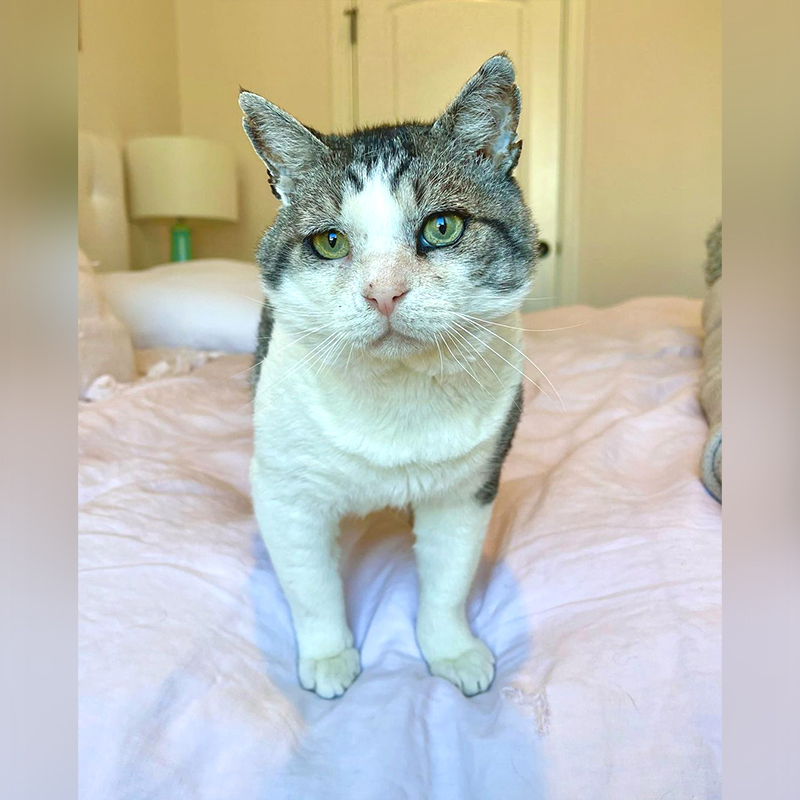
Rescued tomcat Potato via Instagram/kittyboyandfriends


